 Essay Writing Web
Essay Writing Web
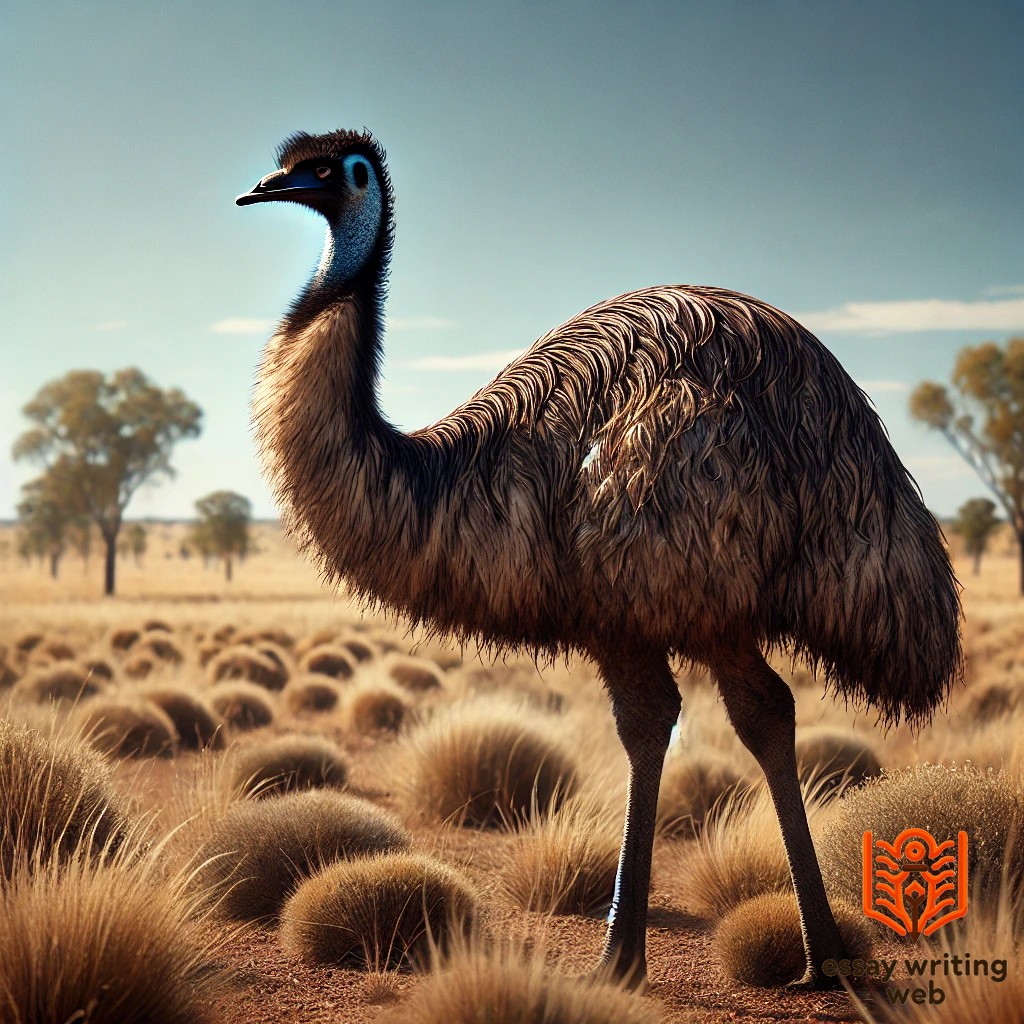
 19-09-2024
19-09-2024
 www.essaywritingweb.com
www.essaywritingweb.com
The emu, scientifically known as Dromaius novaehollandiae, is a fascinating flightless bird native to Australia. As the second-largest bird in the world after the ostrich, emus are an integral part of Australia's diverse wildlife. These birds have captured attention due to their distinct physical characteristics and adaptability to harsh environments. Standing as tall as 6 feet, emus possess long, powerful legs, which make them excellent runners, capable of reaching speeds of up to 50 kilometers per hour.
One of the most interesting aspects of the emu is its inability to fly despite being a bird. Their small, underdeveloped wings are concealed beneath their shaggy, brown feathers, which serve more for insulation than flight. Emus are incredibly well-adapted to the Australian outback, able to survive in a range of environments, from coastal regions to arid deserts. Their diet primarily consists of plant matter like seeds, fruits, and grasses, but they are also known to consume insects and small invertebrates, making them omnivores.
Emus have a remarkable ability to go long periods without water, a crucial trait in the often drought-prone regions of Australia. They can travel great distances in search of food and water, a behavior that showcases their resilience. Another fascinating feature is their social behavior; while they are mostly solitary birds, they come together in small groups during breeding season.
The emu plays an important role not only in Australia's ecosystem but also in its culture. For many Indigenous Australian tribes, the emu holds spiritual significance and is featured in numerous myths and traditional stories. Today, emus are also farmed for their meat, oil, and feathers, all of which are considered valuable resources. Their unique characteristics make them a symbol of endurance and adaptability in the wild.
The emu (Dromaius novaehollandiae) is a large, flightless bird renowned for its distinctive physical attributes. Standing between 5 to 6 feet tall, the emu is the second-largest bird species in the world, after the ostrich. Its long, powerful legs are one of its most striking features, enabling the bird to run at impressive speeds of up to 50 kilometers per hour. These legs also make the emu capable of covering great distances, which is essential for surviving in the vast and varied landscapes of Australia.
The emu’s body is covered in shaggy brown and gray feathers that provide excellent insulation, helping it regulate its body temperature in both hot and cold environments. Unlike most birds, emus do not fly due to their small, underdeveloped wings, which are hidden beneath their plumage. The feathers themselves are coarse and loose, offering protection against the harsh Australian climate.
Their heads are relatively small compared to their body size, with large, alert eyes and a flat, broad beak designed for foraging. The emu's long neck allows it to reach a variety of vegetation, and its keen sense of sight and hearing helps it stay alert to predators. Overall, the emu's physical characteristics make it an exceptionally well-adapted species for survival in the wild.

The emu (Dromaius novaehollandiae) is native to Australia and can be found across a wide range of habitats throughout the continent. Adapted to various environmental conditions, emus thrive in open plains, woodlands, grasslands, and savannahs. They are especially common in Australia’s semi-arid and arid regions, where they roam vast distances in search of food and water. Emus are highly adaptable and can also be found in coastal regions, agricultural lands, and even mountainous areas, though they avoid densely forested regions and very dry deserts.
Australia’s diverse landscapes provide the ideal conditions for emus to survive, as they are nomadic birds that move frequently in response to seasonal changes in food and water availability. During dry periods, they may migrate long distances to locate better resources, demonstrating their remarkable endurance and survival instincts.
While emus are primarily found throughout mainland Australia, their population is sparse in the northern tropical regions and Tasmania. Human development has altered their traditional habitats, but emus continue to thrive due to their adaptability. Some emu populations have also been introduced in other countries, including parts of the United States and Europe, for farming purposes. However, the vast Australian wilderness remains their primary and natural home.
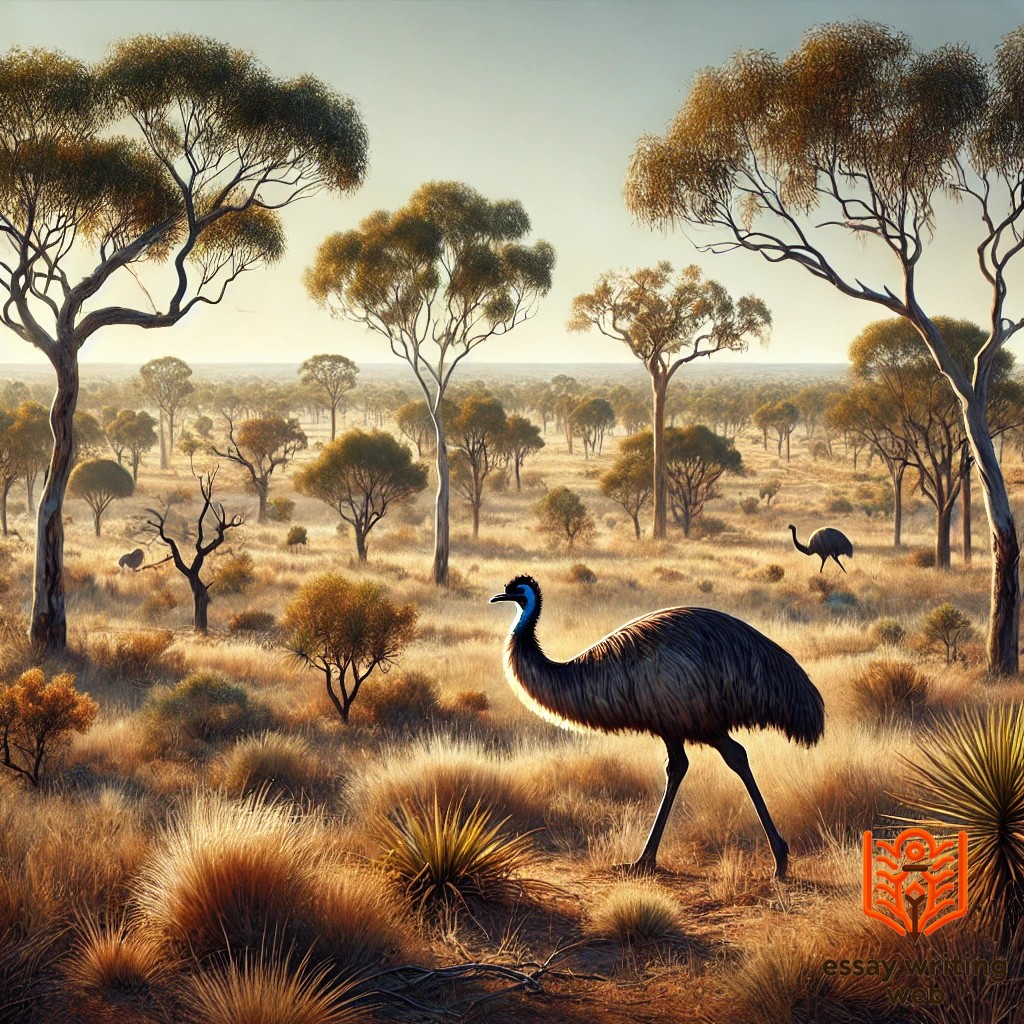
Emus (Dromaius novaehollandiae) are primarily known as a single species of large, flightless bird native to Australia. However, historically, there were several subspecies of emus that were spread across different parts of Australia, each adapted to their unique environments. Today, only the mainland emu subspecies remains, as others have gone extinct.
The mainland emu is the only surviving subspecies of emus and is widespread across Australia. It inhabits a wide variety of habitats, including grasslands, forests, and savannahs, showing remarkable adaptability. These emus are characterized by their tall stature, long legs, and shaggy brown feathers that help them blend into their surroundings. The mainland emu is vital to Australia’s ecosystem as it helps disperse seeds, promoting plant growth in various regions.
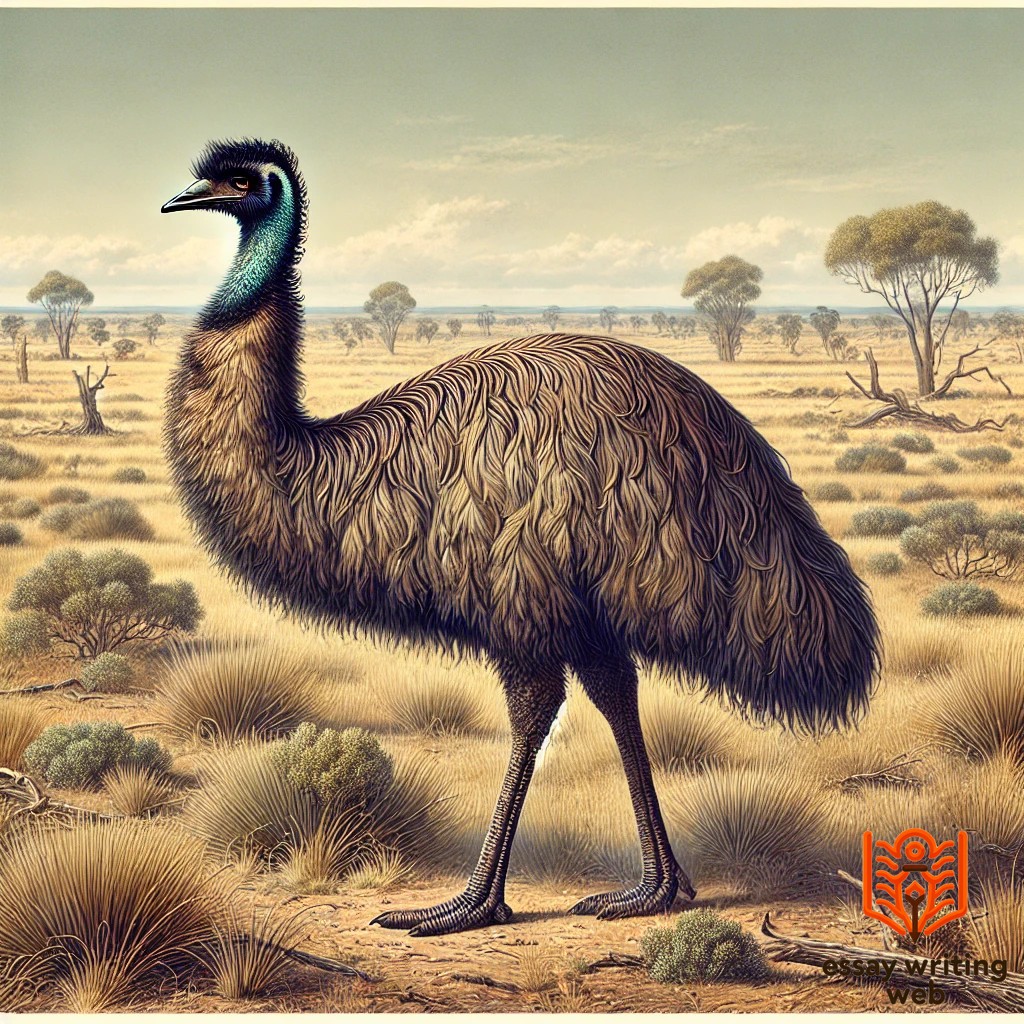
This subspecies was native to King Island, located between mainland Australia and Tasmania. King Island emus were much smaller than their mainland counterparts, standing about half the height of the mainland emu. Unfortunately, they were hunted to extinction in the early 19th century by European settlers, with the last known individual dying in captivity.
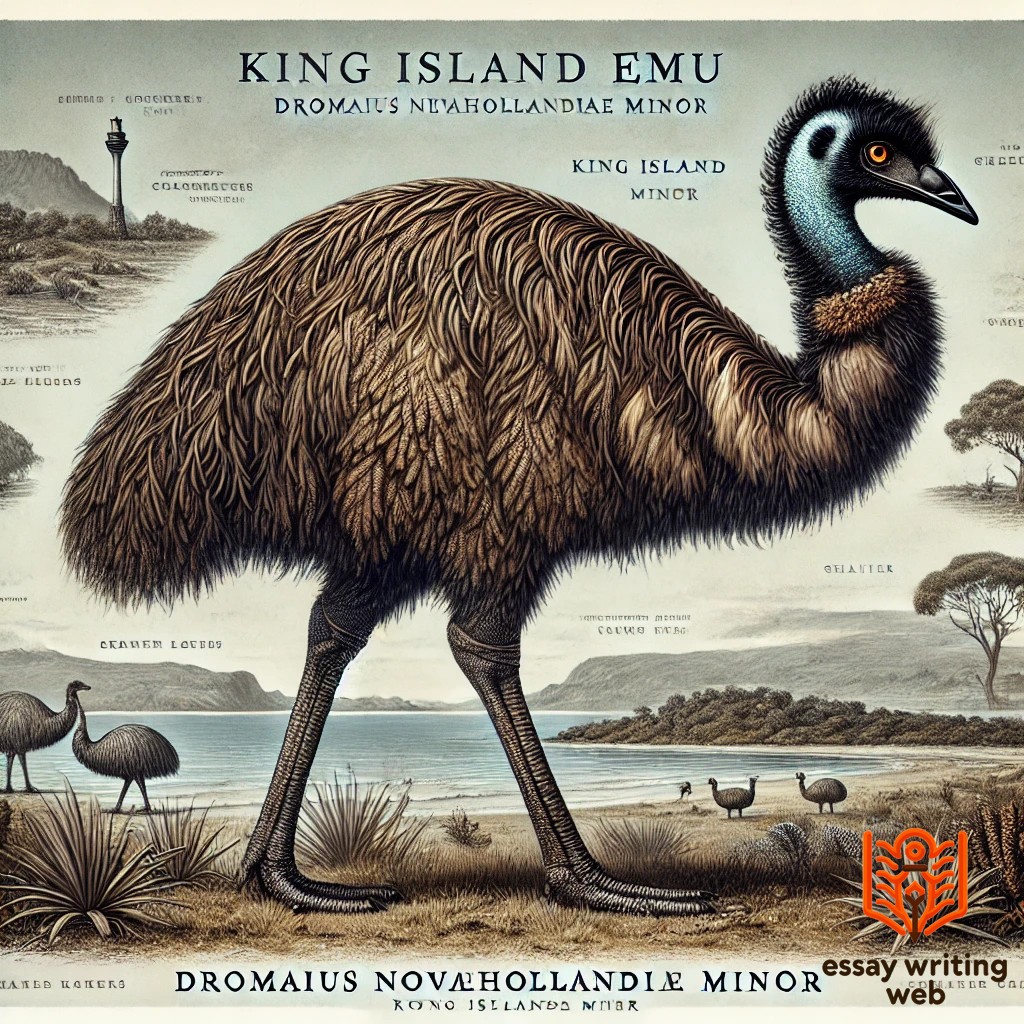
Similar to the King Island emu, this subspecies was native to Kangaroo Island, off the coast of South Australia. The Kangaroo Island emu was also smaller in size, with shorter legs and a more compact body. It became extinct by the early 19th century due to hunting and habitat destruction following European colonization.
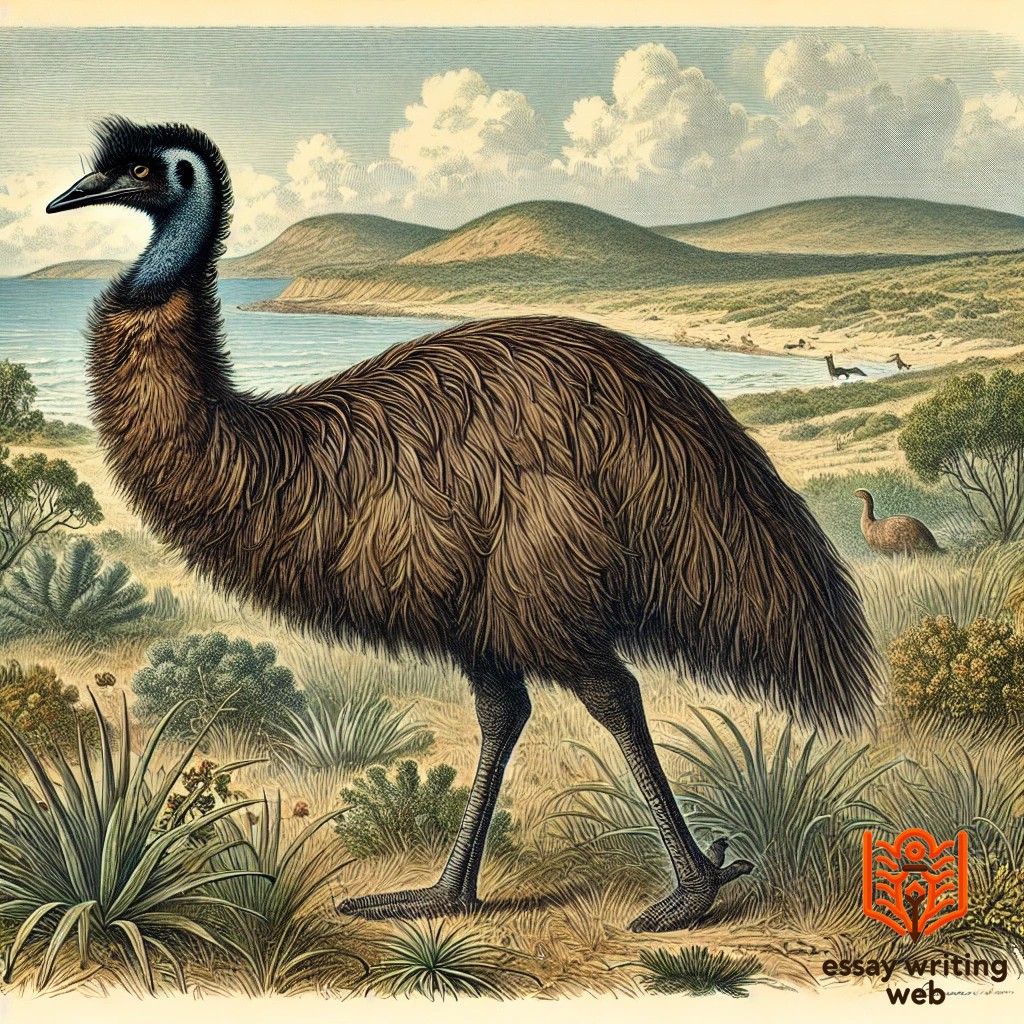
Once native to Tasmania, this subspecies was slightly smaller than the mainland emu but larger than the King and Kangaroo Island varieties. Like the other island subspecies, the Tasmanian emu was hunted to extinction in the mid-1800s, following European settlement.
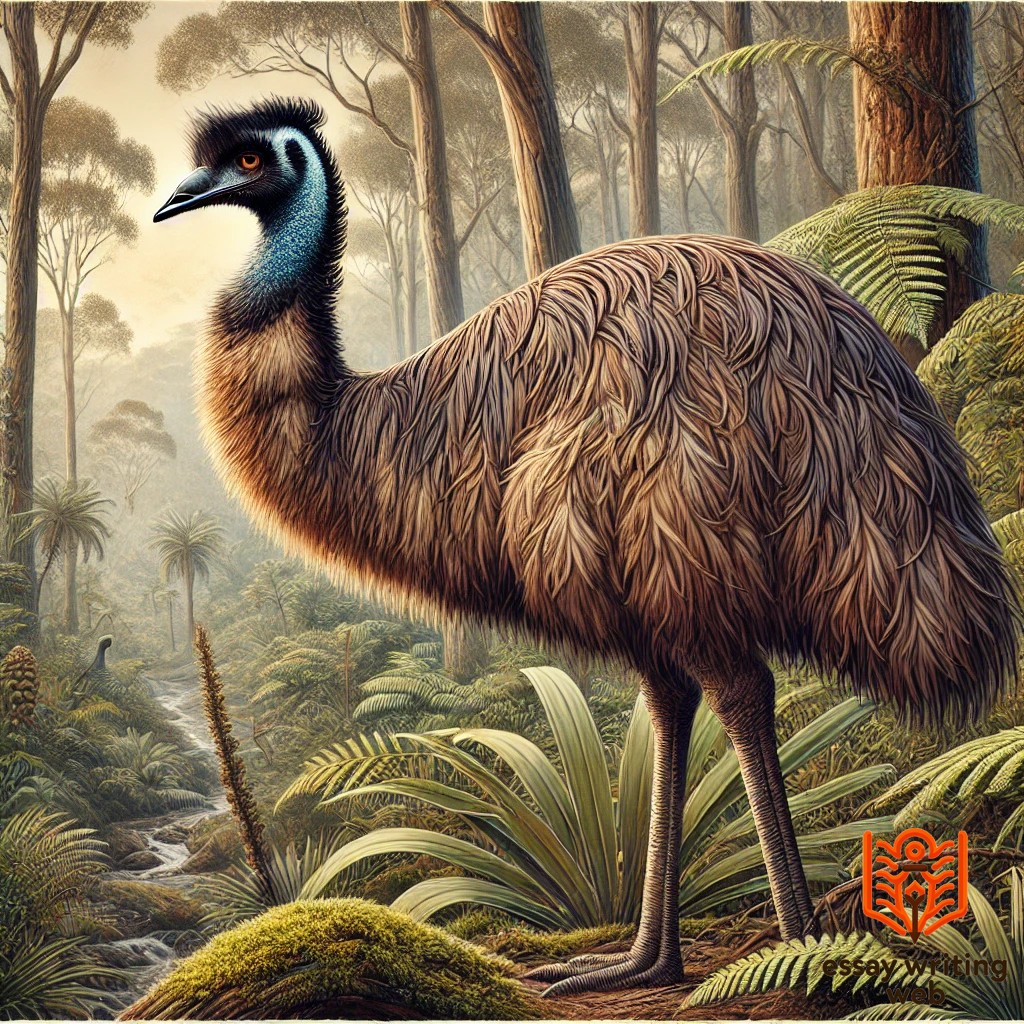
While today we only see the mainland emu thriving across Australia, the history of the various emu subspecies highlights the impact of human activities on animal populations. The loss of these island emu subspecies is a reminder of the need for wildlife conservation efforts to preserve biodiversity.
The emu (Dromaius novaehollandiae) is an omnivorous bird, with a diet primarily consisting of plant-based food. Emus forage for a wide variety of foods, including seeds, fruits, flowers, and fresh grasses, depending on the season and availability. They also consume insects such as grasshoppers, crickets, and caterpillars, which provide them with essential proteins and nutrients. Their flexible diet allows them to survive in diverse environments, from arid deserts to grasslands.
One of the emu’s most notable feeding habits is its ability to consume large quantities of food when available, storing fat reserves to survive during periods of scarcity. This is particularly useful in Australia’s dry, unpredictable climate, where food sources may be limited at certain times of the year. Emus also drink large amounts of water when it is accessible, though they can go for long periods without it.
Emus use their strong beaks to pluck and swallow food quickly. Interestingly, they often ingest small stones and pebbles, which help grind food in their gizzard, aiding digestion. This behavior is common among many bird species but is especially important for emus given their varied diet. Their feeding habits make them resilient and adaptable, key to their survival in Australia’s challenging environments.
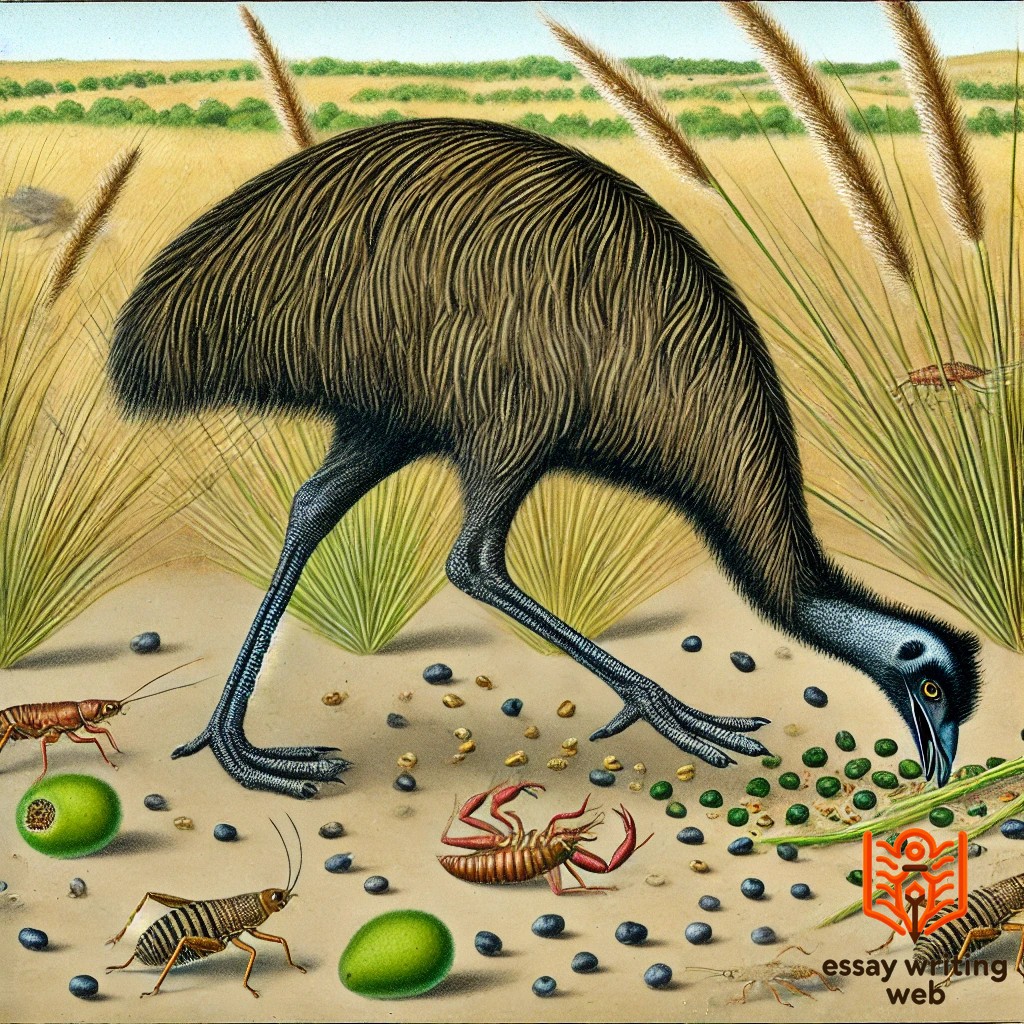
The emu (Dromaius novaehollandiae) is a largely solitary bird, but its behavior and social structure adapt based on the season and environmental conditions. Emus are typically seen roaming alone or in small groups, foraging for food over vast areas. However, during the breeding season, they display more complex social behaviors. Males and females form temporary bonds, and after mating, the male takes full responsibility for incubating the eggs and caring for the young. This is an unusual role reversal in the bird world, where the male dedicates months to raising the chicks.
Emus are also nomadic birds, constantly moving in search of food and water. They can travel great distances, sometimes covering up to 25 kilometers a day. Despite their solitary nature, emus can form large flocks when resources are plentiful, or when they migrate together toward better feeding grounds. These temporary gatherings can consist of several dozen emus.
Communication between emus involves a range of vocalizations, from deep booming sounds, produced by an inflatable throat sac, to grunts and drumming noises. These vocalizations help emus stay in touch with one another, particularly during the mating season or when signaling alarm.
Overall, the emu's behavior reflects its adaptability to Australia’s harsh, often unpredictable environments.
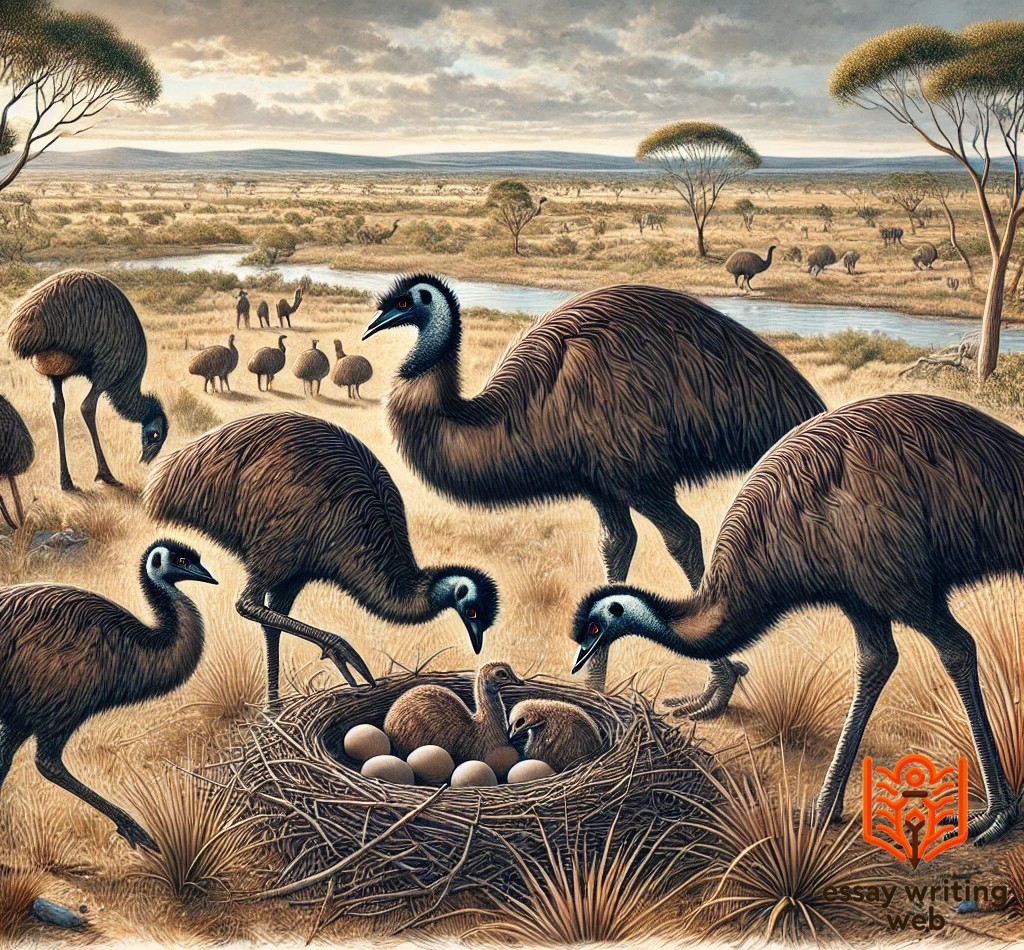
The emu (Dromaius novaehollandiae) has a unique reproductive process, characterized by a distinct role reversal where the male takes on the primary parenting duties. The breeding season typically occurs during the Australian winter, between May and August. During this time, males and females form temporary bonds. The female lays a clutch of 8 to 10 large, dark-green eggs, each weighing about 500 grams. Once the eggs are laid, the male takes full responsibility for incubating them.
The incubation period lasts around 56 days, during which the male emu does not leave the nest to eat or drink, relying solely on stored body fat. He carefully turns the eggs to ensure even incubation and protects them from predators. This intense commitment makes male emus among the most dedicated bird fathers in the animal kingdom.
After the eggs hatch, the male continues to care for the chicks for up to 18 months. The young emus are precocial, meaning they can walk and forage for food soon after hatching, but they rely on the male for protection and guidance. As they grow, the chicks develop the characteristic brown and gray feathers of adult emus and eventually become independent, starting their own nomadic lives. This fascinating life cycle ensures the continuation of emu populations across Australia's varied landscapes.

The emu (Dromaius novaehollandiae) holds significant economic and cultural value, particularly in Australia. Economically, emus are farmed for their meat, oil, and leather, making them a valuable resource in the agricultural sector. Emu meat is low in fat and rich in protein, making it a healthier alternative to other meats. Emu oil, derived from the bird's fat, is highly sought after for its anti-inflammatory properties and is widely used in skincare and medicinal products. Additionally, emu leather is durable and is used in fashion and accessories.
Beyond its economic value, the emu is deeply embedded in the cultural heritage of Indigenous Australians. For many Aboriginal communities, the emu is a sacred animal, often featured in mythology, traditional art, and spiritual practices. The emu's large, sweeping footprints are believed to guide people through the landscape, and its behavior and movements are used as metaphors for life lessons. The bird also appears in ancient rock art and is often referenced in oral storytelling traditions.
In modern Australia, the emu is a national symbol, featured prominently on the country's coat of arms alongside the kangaroo. This reflects the bird's enduring importance, symbolizing strength, endurance, and a connection to the land.

Emu farming has gained significant popularity due to the multiple benefits that come from raising these birds. The emu (Dromaius novaehollandiae) is not only easy to farm due to its adaptability to various climates, but it also offers a range of valuable products, including meat, oil, and feathers.
Emu meat is highly sought after for its health benefits. It is lean, low in fat, and rich in protein, making it a popular alternative to red meat. Emu meat is also high in iron and vitamins, making it a nutritious choice for health-conscious consumers. Its mild flavor and tenderness make it versatile in cooking.
Emu oil is another key product derived from emu farming. Extracted from the bird’s fat, emu oil has anti-inflammatory and healing properties, widely used in skincare, cosmetics, and therapeutic products. It is particularly effective in treating skin conditions, reducing joint pain, and promoting wound healing.
Emu feathers are used in decorative arts and crafts, as well as for making feather dusters. While not as economically significant as meat or oil, feathers add an extra dimension to the bird’s farming value.
Overall, emu farming is a sustainable and profitable industry, offering diverse products with growing demand in the health, cosmetic, and food sectors.
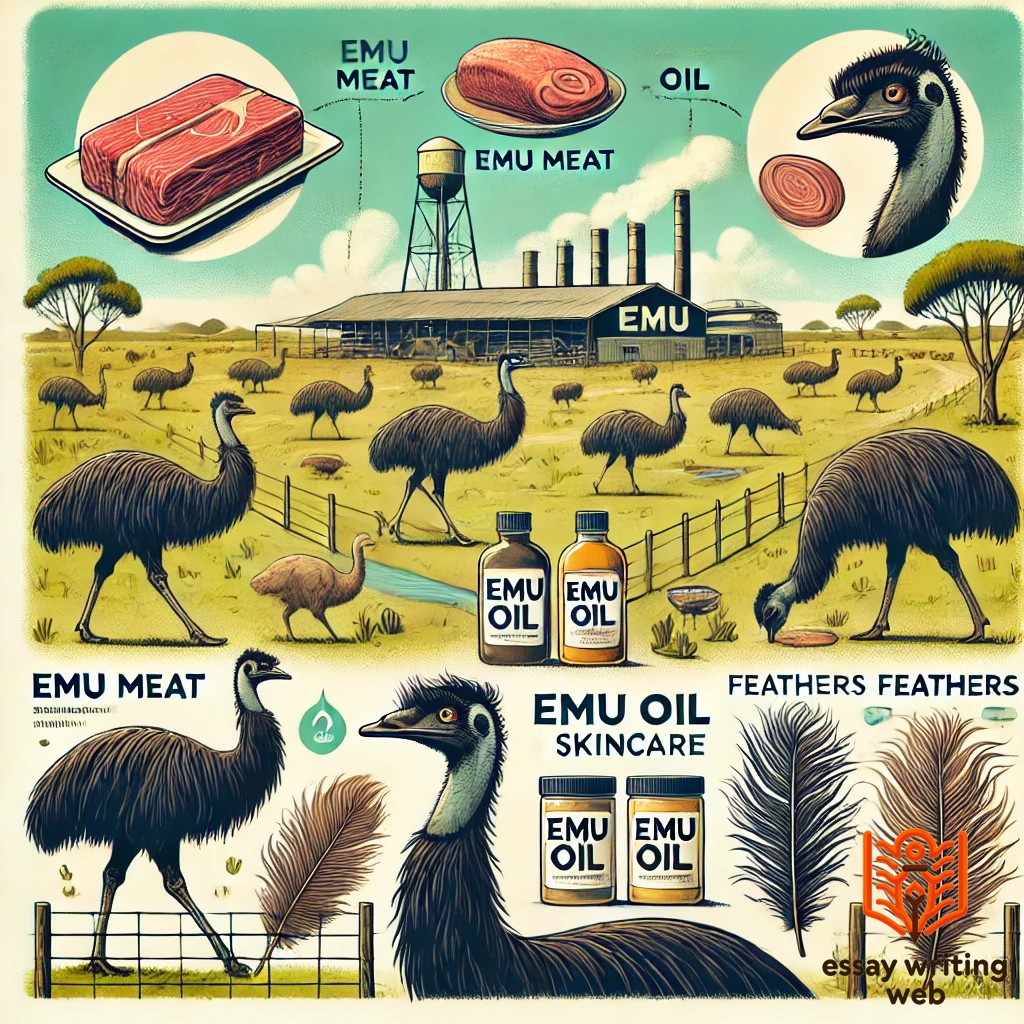
The emu, native to Australia, is the world’s second-largest bird, standing up to 6.5 feet tall. Unlike the ostrich, emus are flightless, but they are remarkable runners, reaching speeds of up to 30 miles per hour. Their long legs are adapted for swift movement across the vast Australian landscapes.
Emus are known for their unique plumage; their feathers are soft and shaggy, providing excellent insulation. Interestingly, these birds have a distinctive three-toed foot structure that aids in their agility and speed. Emus are also part of the ratite family, which includes other flightless birds like ostriches and kiwis.
Social creatures, emus often travel in groups, and their breeding season is particularly fascinating. Males take on the responsibility of incubating eggs, which can number between 7 to 15, for about 8 weeks. During this time, the male rarely leaves the nest, showcasing his dedication as a parent.
Their diet consists mainly of plants, fruits, and seeds, and they play a crucial role in the ecosystem by dispersing seeds. With their intriguing behaviors and adaptations, emus continue to captivate the interest of bird enthusiasts and nature lovers alike.
